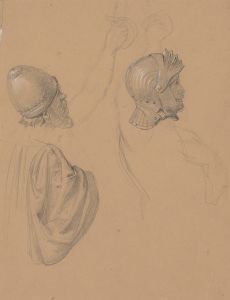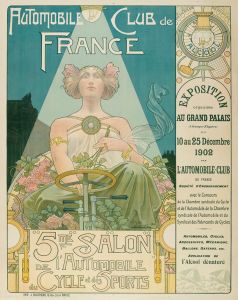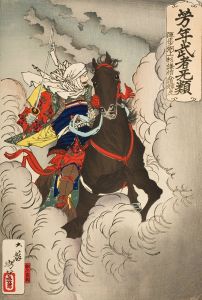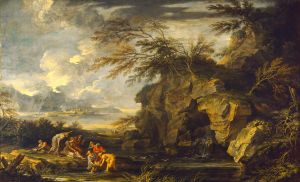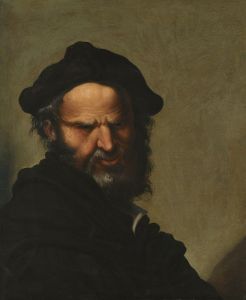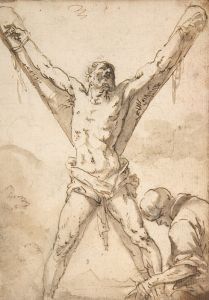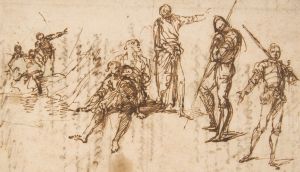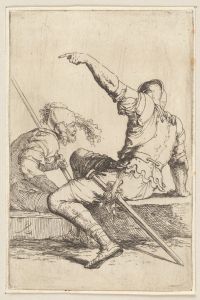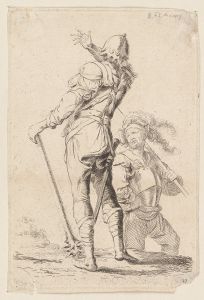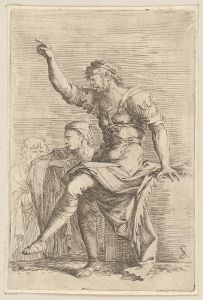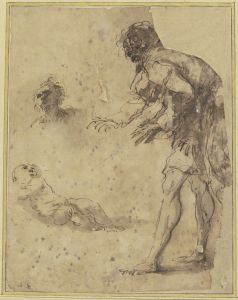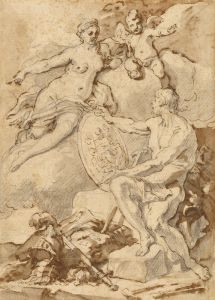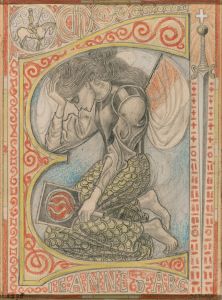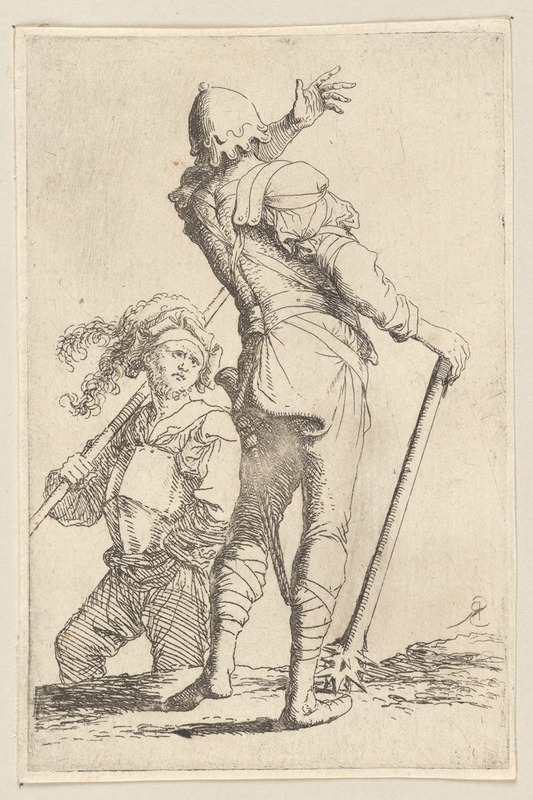
Two Soldiers, One Seen from Behind, Holding a Club 2
A hand-painted replica of Salvator Rosa’s masterpiece Two Soldiers, One Seen from Behind, Holding a Club 2, meticulously crafted by professional artists to capture the true essence of the original. Each piece is created with museum-quality canvas and rare mineral pigments, carefully painted by experienced artists with delicate brushstrokes and rich, layered colors to perfectly recreate the texture of the original artwork. Unlike machine-printed reproductions, this hand-painted version brings the painting to life, infused with the artist’s emotions and skill in every stroke. Whether for personal collection or home decoration, it instantly elevates the artistic atmosphere of any space.
Salvator Rosa was an Italian Baroque painter, poet, and printmaker, known for his unorthodox and often dramatic style. Born in 1615 in Arenella, near Naples, Rosa was a versatile artist whose works spanned various genres, including landscapes, portraits, and historical paintings. He was also known for his satirical and philosophical writings. Rosa's work is characterized by its bold compositions, dynamic figures, and a penchant for the dramatic and the sublime.
"Two Soldiers, One Seen from Behind, Holding a Club 2" is one of Rosa's lesser-known works. While detailed information about this specific painting is scarce, it is consistent with Rosa's interest in military subjects and his ability to capture the human form in motion. Rosa often depicted soldiers and scenes of battle, reflecting the tumultuous times in which he lived, marked by wars and political upheaval in Italy.
The painting likely features two soldiers, with one prominently seen from behind, holding a club. This composition might suggest a moment of tension or impending action, a common theme in Rosa's work. His soldiers are often portrayed with a sense of realism and psychological depth, capturing the grit and determination of military life.
Rosa's technique often involved dramatic contrasts of light and shadow, a hallmark of the Baroque style. This use of chiaroscuro would have enhanced the three-dimensionality of the figures and added to the overall dramatic effect of the scene. His brushwork was typically vigorous and expressive, contributing to the dynamic quality of his paintings.
Salvator Rosa's work was influential in his time and continues to be studied for its unique approach to Baroque art. He was a part of the Neapolitan school and later moved to Rome, where he became associated with a circle of intellectuals and artists. His work was appreciated for its originality and emotional intensity, setting him apart from many of his contemporaries.
While "Two Soldiers, One Seen from Behind, Holding a Club 2" may not be as widely recognized as some of Rosa's other works, it embodies the characteristics that define his artistic legacy. Rosa's ability to convey complex human emotions and his innovative compositions have earned him a lasting place in the history of art.
In summary, Salvator Rosa's "Two Soldiers, One Seen from Behind, Holding a Club 2" reflects the artist's fascination with military themes and his skill in rendering the human figure with dramatic intensity. Although specific details about this painting are limited, it remains a testament to Rosa's distinctive style and his contribution to the Baroque movement.





